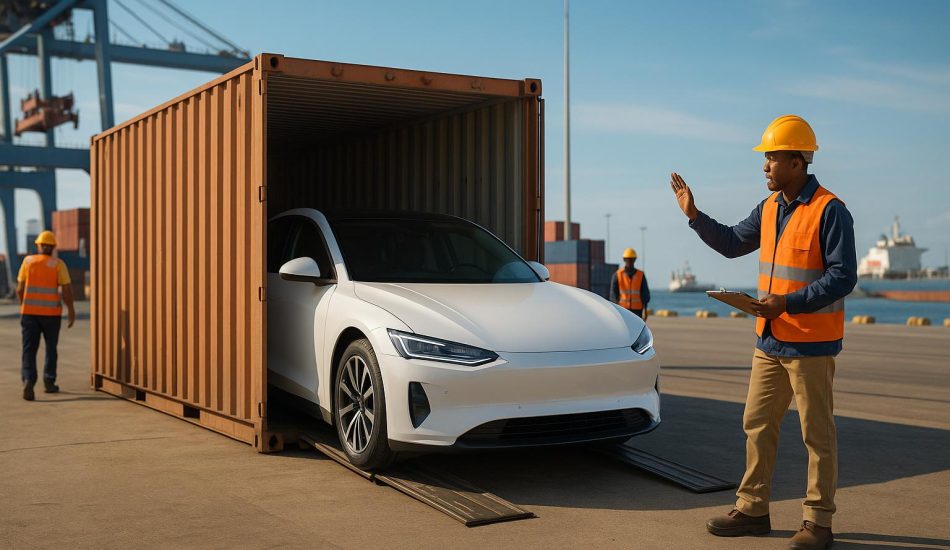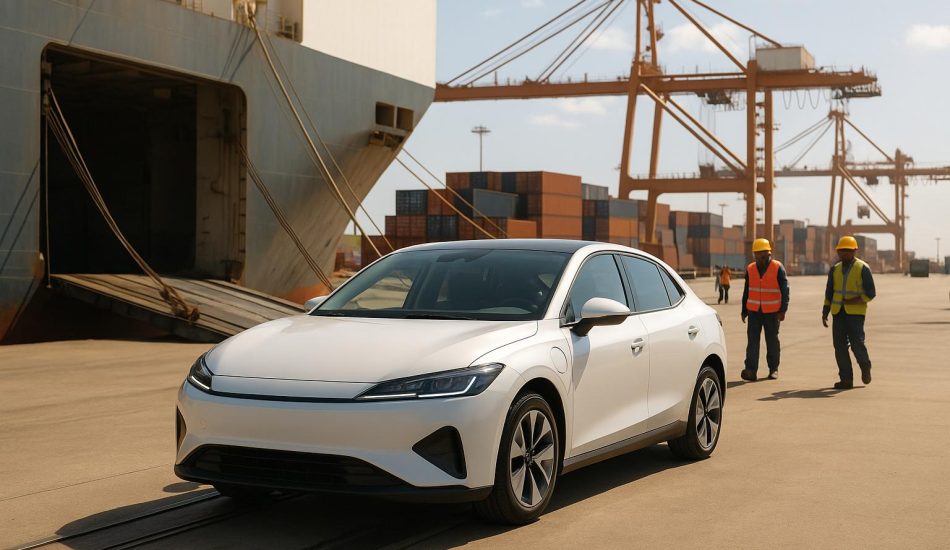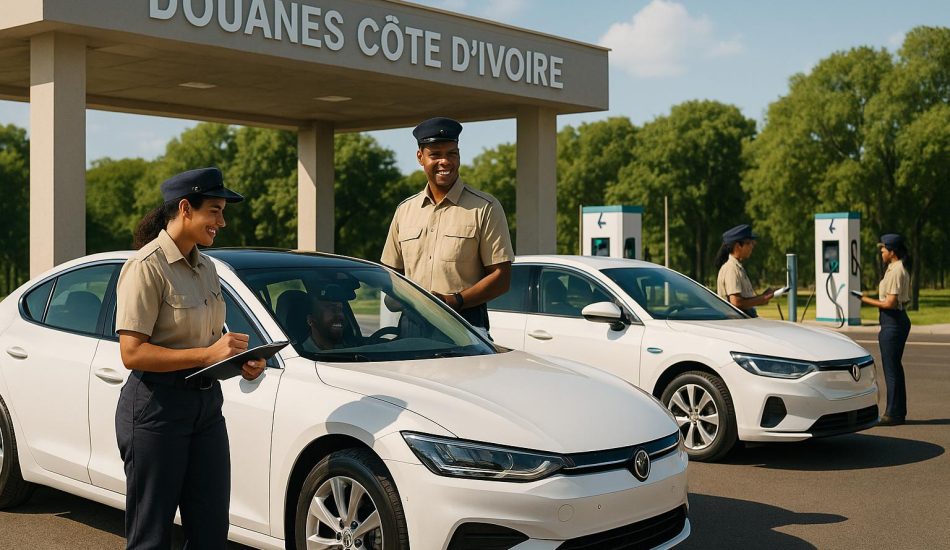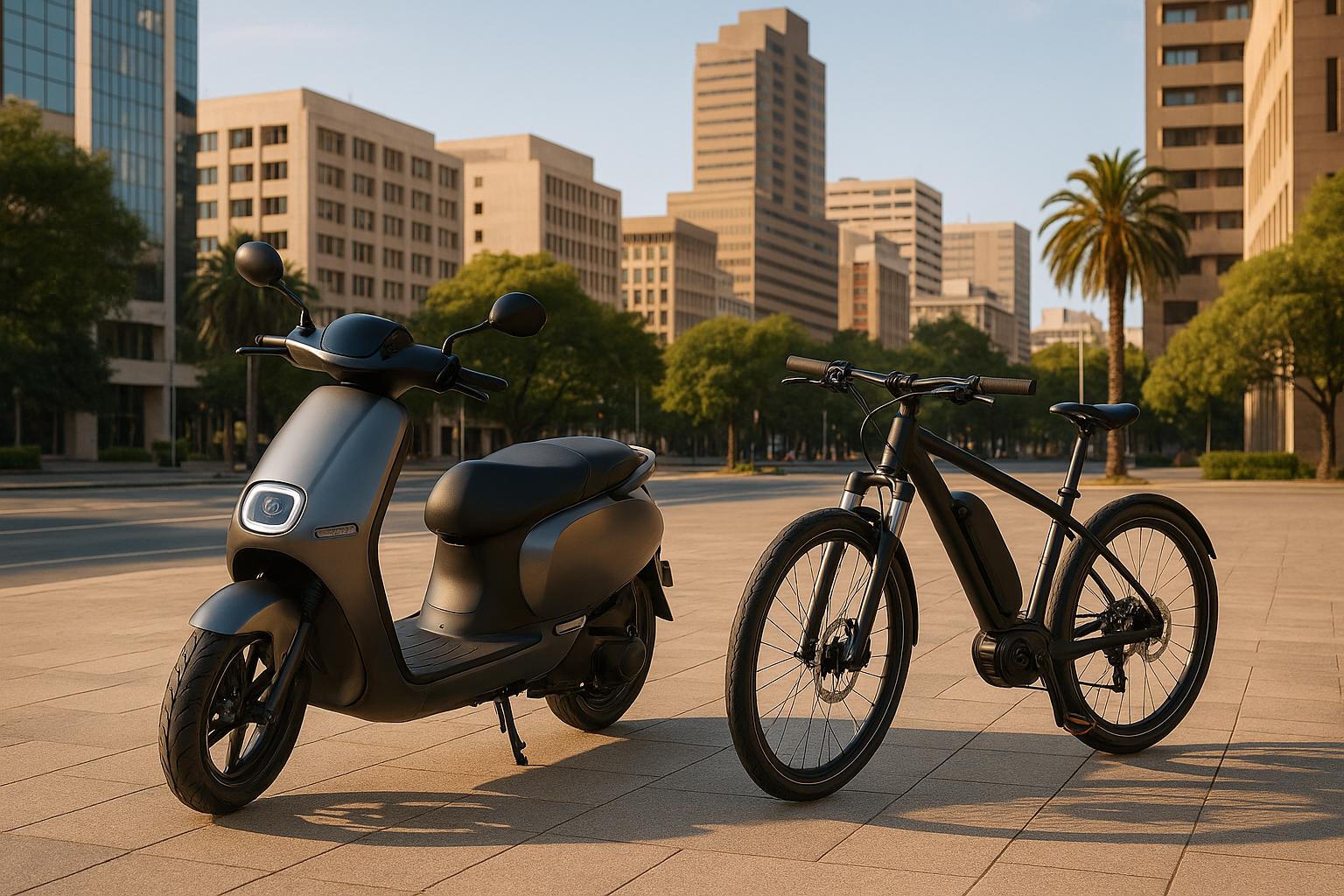
The electric two-wheeler market in South Africa is growing fast in 2025, driven by urban mobility needs, affordability, and cleaner transportation goals. Scooters dominate due to their low cost and practicality, while electric bikes are popular in delivery services and long-distance travel. Key factors include:
- Market Growth: Urban centers like Cape Town and Johannesburg lead adoption, with younger consumers driving demand. The market is projected to grow significantly, with values rising from $311.50M in 2024 to $934.31M by 2033.
- Government Support: Reduced import duties, tax incentives, and investments in charging infrastructure are boosting adoption.
- Charging Innovations: Solar-powered stations and battery-swap systems (like "Swop & Go") are addressing infrastructure gaps and load-shedding challenges.
- Consumer Preferences: Scooters are ideal for city commutes, while bikes suit longer distances. Both offer lower operating costs than gas-powered vehicles.
Despite growth, challenges include high purchase costs, uneven infrastructure, and consumer hesitation. Addressing these barriers could unlock further potential in South Africa’s electric two-wheeler market.
Market Size and Growth Projections
Current Market Size and Growth Trends
By 2025, South Africa’s electric two-wheeler market has experienced a notable surge. This growth is fueled by rising economic pressures, increased environmental awareness, and advancements in technology that have made electric scooters and bikes more accessible to consumers nationwide.
Among these, the scooter segment stands out as the leader, thanks to its affordability and practicality. Meanwhile, electric bikes are gaining traction, particularly within delivery services and last-mile logistics, where their lower operating costs compared to gasoline-powered vehicles make them an attractive option.
Urban centers like Cape Town, Johannesburg, and Durban are at the forefront of this shift, with adoption accelerating in these cities. Younger consumers, in particular, are driving this trend, favoring sustainable and cost-efficient transportation options that align with their values and financial realities.
When compared to other electric vehicle categories, the two-wheeler segment is growing at a faster pace. Lower upfront costs and fewer infrastructure hurdles make these vehicles more accessible, positioning them as an entry point for broader acceptance of electric mobility in South Africa.
These growth patterns are further supported by government initiatives and investments in infrastructure, setting the stage for continued market expansion.
Government Investments and Policy Frameworks
Government policies have played a pivotal role in shaping the electric two-wheeler market. Measures such as reduced import duties on electric vehicle components, tax incentives for manufacturers setting up local assembly plants, and streamlined registration processes have all contributed to the sector’s growth.
At the provincial level, targeted initiatives have added momentum. For instance, the Western Cape offers rebate programs for electric vehicle purchases, while Gauteng has introduced preferential parking for electric vehicles in major business hubs. These localized efforts have created an environment that encourages adoption in key urban and economic areas.
Charging infrastructure development has also received significant attention. Through public-private partnerships, the government is working to establish comprehensive charging networks in major cities. The Department of Transport has allocated funds to build charging stations along important transportation routes, addressing one of the main challenges to electric vehicle adoption.
In addition, updated safety standards, licensing rules, and operational guidelines have provided clarity and reduced uncertainties, encouraging further investment in the sector.
Urban Mobility and Climate Goals
The rise of electric two-wheelers is reshaping urban mobility in South Africa. These vehicles help reduce traffic congestion, improve air quality, and offer a practical solution for short-to-medium-distance travel in cities where traditional vehicles often face challenges.
South Africa’s climate commitments, outlined in its Nationally Determined Contributions, have added further momentum to the adoption of electric vehicles. With transportation being a major contributor to the country’s carbon emissions, electric two-wheelers are becoming an essential part of its strategy to reduce emissions.
Urban planning is also evolving to accommodate this shift. Cities are incorporating electric mobility into their transportation infrastructure by creating dedicated lanes for electric two-wheelers, integrating charging stations into public spaces, and prioritizing clean transportation policies in city centers.
The benefits are already visible. In areas with higher adoption rates, air quality has noticeably improved, contributing to better public health and showcasing the real-world advantages of electric transportation.
Beyond environmental gains, the economic appeal of electric two-wheelers is hard to ignore. They offer lower operating costs, including reduced fuel expenses and minimal maintenance needs, which resonate with cost-conscious consumers. Combined with government incentives, these factors make electric two-wheelers an attractive option for a wide range of income groups.
Fezile Dhlamini (Green Scooter): Building Africa’s Electric Motor-Tricycle | Mashstartup Podcast
Electric Scooters vs Electric Bikes
As South Africa continues to embrace sustainable urban mobility, electric scooters and bikes have carved out distinct roles in the market. Both options contribute to greener commuting, but they cater to different needs, preferences, and budgets.
Electric Scooters: Market Trends and Consumer Demand
Electric scooters have gained significant traction in South Africa, largely because of their affordability and practicality. They appeal to those looking for an economical way to get around, especially in urban areas.
Improvements in battery technology have made scooters more reliable, with better range and quicker charging capabilities. Their compact design and maneuverability make them a favorite for navigating busy city streets, and they’re particularly popular in the delivery and logistics sectors, where efficiency and cost-effectiveness are key.
While scooters shine in urban settings, electric bikes step in when longer distances or higher performance are required.
Electric Bikes and Motorcycles: Features and Uses
Electric bikes and motorcycles are designed for users who need more from their ride – whether it’s extended range, higher speeds, or specialized features. These vehicles are well-suited for longer commutes and can handle highway speeds, making them a practical choice for both urban and rural travel.
In areas where public transit options are limited or distances are greater, electric bikes and motorcycles provide a reliable solution. They’re also ideal for commercial uses, offering the durability and performance required for demanding tasks. Many models come with removable batteries, which make charging more convenient.
Scooters vs. Bikes: A Side-by-Side Look
Choosing between an electric scooter and an electric bike or motorcycle often comes down to personal needs, budget, and how the vehicle will be used. Here’s a quick comparison of their key features:
| Feature | Electric Scooters | Electric Bikes/Motorcycles |
|---|---|---|
| Price | More budget-friendly | Higher price point |
| Range | Best for short, city commutes | Built for longer distances |
| Top Speed | Designed for city speed limits | Capable of highway speeds |
| Ideal Users | Urban commuters, students, delivery riders | Long-distance travelers, rural users |
| Charging Time | Faster charging cycles | Longer charging times |
| Weight | Lightweight and easy to handle | Heavier due to advanced components |
| License Requirements | Often need a basic motorcycle license | Typically require a full motorcycle license |
Scooters tend to attract younger users, such as students and city dwellers, who prioritize convenience and affordability for short trips. On the other hand, electric bikes and motorcycles appeal to those with higher incomes who need a vehicle capable of handling longer commutes or more demanding travel conditions.
Even maintenance needs differ. Scooters, with their simpler mechanics, are easier to maintain, while electric bikes and motorcycles, though less demanding than gas-powered versions, require more upkeep due to their advanced features. Each type plays a unique role in the evolving landscape of urban transportation.
Charging Infrastructure and Battery Technology
The success of electric two-wheelers hinges on reliable charging options and cutting-edge battery systems. As the market grows, efforts are ramping up to tackle infrastructure challenges while battery technology continues to evolve, improving performance and lowering costs. Here’s a closer look at how these developments are shaping the future of electric mobility.
Charging Station Development in South Africa
South Africa is making strides in expanding its EV charging network, with several major initiatives aimed at supporting two-wheeler users. One standout project is spearheaded by Zero Carbon Charge (CHARGE), which is investing R11.4 billion (about $760 million) to roll out EV charging stations across the Eastern Cape. A total of 29 sites are planned – 18 for passenger and light commercial vehicles and 11 for electric trucks. These stations are designed to be solar-powered and operate independently of Eskom’s grid, making them resilient to load-shedding issues. Nationally, CHARGE has even bigger plans, aiming to deploy 120 off-grid charging stations for passenger vehicles and another 120 for electric trucks.
Construction of these stations kicked off in early 2025, with the first pilot site established at Wagon Wheels Farm Stall along the N6 highway. These stations feature fast-charging capabilities and are strategically positioned along key travel routes to facilitate long-distance journeys.
Global manufacturers are also stepping in to support South Africa’s EV ecosystem. BYD, for example, has announced plans to install 200–300 EV chargers across the country by 2026.
Adding to this progress, Valternative Energy has pioneered South Africa’s first "Swop & Go EV system" tailored for electric bikes. This innovative system allows riders to swap out an empty battery for a fully charged one in less than a minute, eliminating downtime. By October 2025, the system boasted 650 bikes on the road, had performed over 300,000 battery swaps, and saved 20 tons of CO₂ emissions.
Battery Technology Improvements
Modern lithium-ion batteries have come a long way, offering faster charging times and extended ranges – key factors for buyers. The convenience of removable batteries, which can be charged indoors using regular outlets, is especially appealing in urban areas where outdoor charging might not be secure.
The "Swop & Go" system is a perfect example of how advanced batteries are reshaping the user experience. Instead of waiting for a battery to recharge, riders can simply exchange it for a fully charged one at designated swap stations. This subscription-based model eliminates the need for expensive battery replacements and ensures riders always have access to the latest battery technology. These advancements are fueling the rapid growth of the market, particularly in 2025.
Energy efficiency improvements have also made modern batteries more reliable. They hold their charge longer, perform well in diverse weather conditions, and have a longer lifespan compared to older models. This translates to lower overall costs for users.
Infrastructure Gaps Between Urban and Rural Areas
Despite policy-driven efforts to expand infrastructure, rural areas still lag behind urban centers like Cape Town, Johannesburg, and Durban, where charging networks are growing rapidly. Limited grid access and fewer commercial charging stations pose significant challenges in rural regions. However, off-grid, solar-powered stations developed by Zero Carbon Charge are helping to address these issues.
The battery-swap model also offers a practical solution in areas with limited traditional charging infrastructure. Swap stations require only basic power connections and come stocked with fully charged batteries, making them a versatile option. Incorporating renewable energy, particularly solar power, is a critical factor in supporting sustainable transportation and advancing South Africa’s energy independence goals.
sbb-itb-99e19e3
Major Players and Market Competition
South Africa’s electric two-wheeler market is a mix of global giants and emerging local manufacturers. The market’s value rose from $311.50 million in 2024 to a projected $934.31 million by 2033, fueling a competitive environment.
Global and Local Manufacturers
Several international brands are making their mark in South Africa’s electric two-wheeler sector. Key players in the broader African market include KTM, Bajaj Auto, Yamaha, Hero MotoCorp, and Honda. Notably, early entrants in South Africa’s electric segment included U.S.-based Zero and a Chinese scooter brand, both among the first to introduce electric motorbikes in the region.
Local manufacturers are also stepping up. In July 2022, Rheinmetall Denel Munition (Pty) Ltd. announced plans to produce electric bikes, buses, and scooters, signaling a shift toward domestic production. This local focus not only lowers costs but also allows for designs that cater specifically to South African road conditions and consumer needs, addressing the market’s price sensitivities. These developments are paving the way for strategic collaborations and increased investments in research and development.
Partnerships and R&D Investments
Collaborations between international original equipment manufacturers (OEMs) and local businesses are speeding up product innovation and market entry. The surge in sales since 2023 can be attributed to two importers managing fleets of commercial electric scooters.
Government policies are also playing a pivotal role. Starting in March 2026, manufacturers will benefit from a 150% tax deduction on investments in electric and hydrogen vehicle production in South Africa. Combined with government-led awareness campaigns and supportive policies, these incentives are creating an environment conducive to growth in production, distribution, and service networks.
Availability via EV24.africa
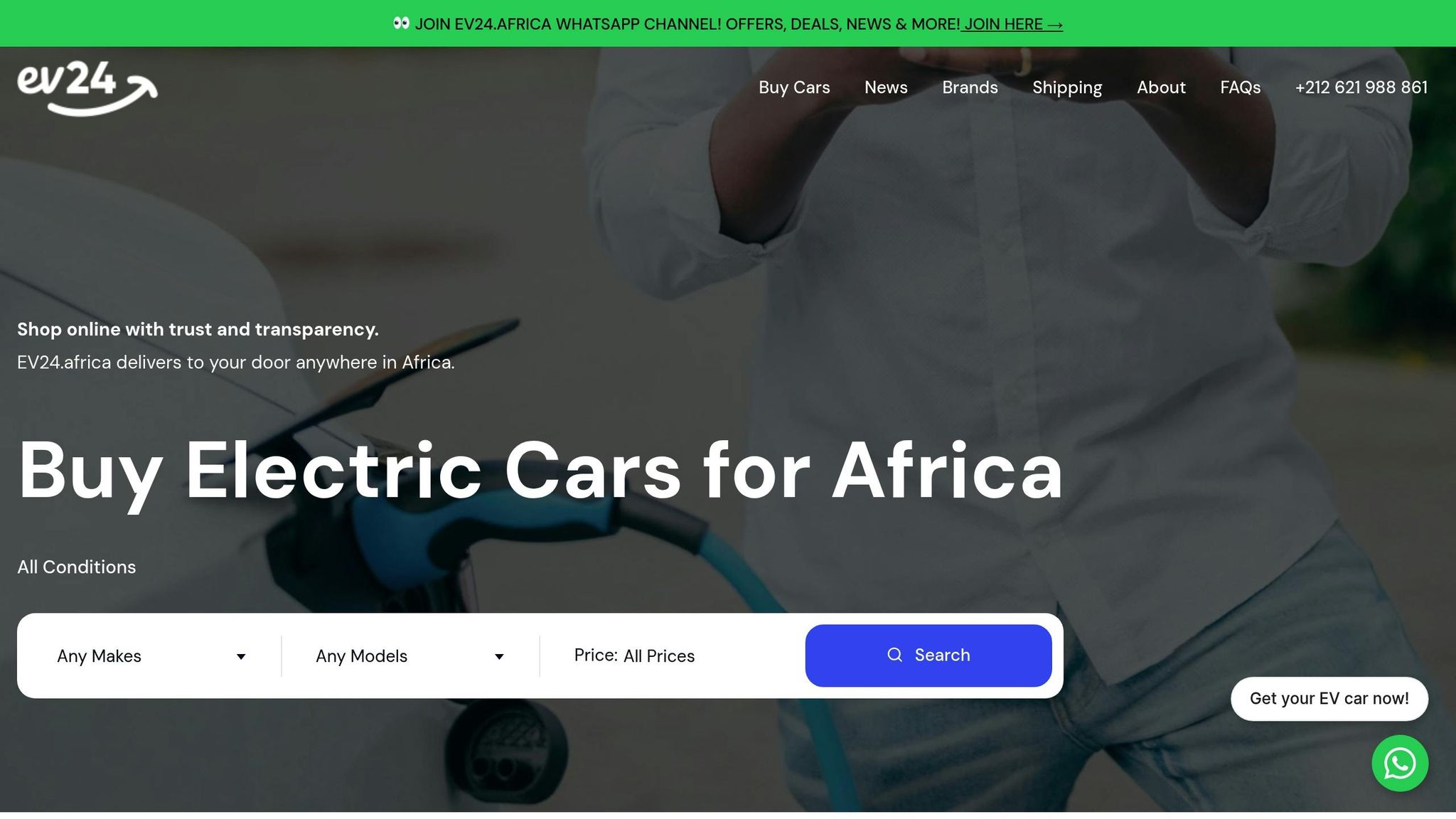
In this competitive market, digital platforms are emerging as critical players. EV24.africa stands out as a leading online marketplace for electric vehicles across Africa. It offers features like transparent pricing, financing options, shipping to 54 African countries, and robust customer support. As government incentives and local manufacturing expand the market, platforms like EV24.africa are making electric vehicles more accessible to consumers. Despite this, traditional dealerships and direct sales from manufacturers still dominate the electric two-wheeler market.
The electric two- and three-wheeler fleet is expected to grow from 1,795 units in 2024 to 21,700 units by 2030, showcasing significant potential for online platforms. Financing options and attractive schemes from manufacturers are helping make electric two-wheelers affordable for a broader audience. Additionally, ride-sharing apps and mobility platforms incorporating electric two-wheelers are gaining popularity among younger, tech-savvy consumers. This trend indicates that online marketplaces could play an increasingly important role as the market evolves.
Market Adoption Challenges
South Africa’s electric two-wheeler market shows promise, but several obstacles are slowing its growth. Key challenges include financial constraints, limited charging infrastructure, and consumer hesitation.
High Purchase Costs
Electric two-wheelers often come with a higher price tag compared to gasoline-powered models, discouraging potential buyers. To address this, some manufacturers are introducing financing options, like installment plans, to make these vehicles more accessible. However, the combination of financial hurdles, infrastructure gaps, and limited consumer awareness continues to hamper the market’s expansion.
Infrastructure Gaps and Power Supply Issues
A lack of widespread charging stations and occasional power outages make owning an electric two-wheeler less practical, especially in areas outside major cities. While urban centers are starting to see charging points integrated into residential and commercial spaces, progress is inconsistent. This uneven development adds to consumer uncertainty, slowing the adoption of electric two-wheelers.
Consumer Awareness and Adoption Barriers
Many potential buyers remain unfamiliar with electric two-wheelers, leading to skepticism. Although public education campaigns and demonstrations are underway to address this, changing consumer perceptions takes time. Building trust and confidence in these vehicles is a gradual but necessary step toward broader acceptance.
Market Outlook and Key Takeaways
Let’s break down the future forecasts and compare South Africa’s electric two-wheeler market with the broader African landscape.
2025-2031 Market Forecasts
South Africa’s electric two-wheeler market is expected to see substantial growth over the next decade. Two possible growth scenarios provide a glimpse into what’s ahead:
- Scenario A: The market could grow from $62.88 million in 2023 to around $384.74 million by 2031, with a compound annual growth rate (CAGR) of 25.31%.
- Scenario B: A stronger trajectory suggests the market might climb from $311.50 million in 2024 to $934.31 million by 2033, reflecting a CAGR of 11.61%.
This growth is fueled by several factors. Advances in battery technology are addressing consumer concerns about range and charging times, making electric two-wheelers more practical for everyday use. Additionally, government incentives continue to play a key role in encouraging adoption.
The commercial sector is also driving demand. South Africa’s electric commercial vehicle market, which includes two- and three-wheelers, is forecasted to grow from 172 vehicles valued at $13.2 million in 2024 to 1,000 vehicles worth $75.7 million by 2030. Flexible leasing models are helping last-mile delivery drivers overcome the higher upfront costs compared to traditional motorcycles.
These projections highlight South Africa’s strong position and set the stage for a comparison with other African markets.
South Africa vs. Other African EV Markets
South Africa stands out as a leader in Africa’s electric two-wheeler sector. While the continent-wide market is estimated to reach $5 billion by 2025, South Africa’s growth rate and supportive policies give it an edge over other countries like Nigeria and Egypt.
With a projected CAGR of 11.61%, South Africa’s growth significantly outpaces the Africa-wide average of just over 4%. The country’s government incentives and an expanding local manufacturing base further cement its leadership. In contrast, Nigeria and Egypt also show strong adoption but face more significant infrastructure challenges.
That said, South Africa shares some common obstacles with the rest of the continent. Issues like uneven infrastructure development between urban and rural areas, high purchase costs, and limited consumer awareness continue to affect market growth.
Key Insights Summary
Several market dynamics make this sector an attractive investment opportunity. Urban congestion, rising fuel prices, and increasing environmental awareness are driving demand in the last-mile delivery segment, where electric scooters and bikes offer lower operating costs.
Local manufacturing is expanding, and platforms like EV24.africa are making adoption easier by connecting consumers with financing options, government incentives, and after-sales support. These platforms are instrumental in reducing barriers to entry and accelerating growth.
However, the sector’s long-term success hinges on addressing infrastructure challenges and improving consumer education. While urban areas are seeing strong adoption rates, rural regions still need expanded charging networks and more reliable power supplies. Companies that can close these gaps and effectively utilize government incentives are well-positioned to capture market share in this rapidly growing industry.
FAQs
What challenges are slowing the growth of electric scooters and bikes in South Africa, and how are they being addressed?
The adoption of electric scooters and bikes in South Africa faces hurdles, particularly due to high upfront costs and a lack of charging infrastructure. These challenges have slowed the pace of growth, but manufacturers are stepping up by designing more budget-friendly models suited to local conditions.
To tackle these barriers, the government has introduced measures like tax incentives and adjusted import duties, aiming to make electric two-wheelers more affordable for consumers. Alongside these initiatives, the increasing emphasis on sustainable urban transport is paving the way for expanded charging networks and greater acceptance of electric mobility across the country.
What role do government policies and incentives play in the growth of electric two-wheelers in South Africa?
Government policies and incentives are key to shaping the electric two-wheeler market in South Africa. Beginning in 2026, manufacturers will be able to take advantage of a 150% tax deduction on investments related to the production of electric and hydrogen-powered vehicles. This initiative aims to stimulate local manufacturing and spark innovation in the sector.
On the flip side, high import duties on electric vehicles pose a challenge. With tariffs set at 25% – compared to 18% for traditional combustion vehicles – these added costs could slow consumer adoption by keeping prices elevated. These policies present a mix of opportunities and hurdles that must be navigated to encourage the broader use of electric two-wheelers.
What are the main differences between electric scooters and electric bikes in terms of functionality and consumer preferences in South Africa?
Electric scooters and electric bikes each bring something different to the table, catering to specific needs and lifestyles in South Africa.
Electric scooters are fully motorized, meaning no pedaling is required. This makes them a great choice for commuters who want a hassle-free way to zip through busy city streets. With their quick acceleration and higher speeds, they’re especially useful for longer commutes or navigating heavy traffic with ease.
Electric bikes, however, blend the traditional bicycle experience with the boost of an electric motor. Many models still require pedaling, which makes them appealing to those who enjoy staying active or want a more versatile option for shorter trips. They’re also perfect for riders who like the freedom to switch between manual and motorized modes, especially when tackling different types of terrain.
Deciding between the two often comes down to what fits best with the rider’s daily routine, whether they prioritize convenience or enjoy putting in a bit of effort during their ride.


